Palestinian Revolutionary Posters - Voices of Resistance and Resilience
Palestinian revolutionary posters have stood as a formidable symbol of expression and resistance for decades, unequivocally embodying the true spirit of the Palestinian struggle for justice and freedom. Instigated by the post-1948 adversarial climate, the need for artistic, political, and insurgent expression arose in the form of powerful, easily understood, and swiftly distributed graphic visuals that conveyed the spirit of the fight. Palestinian posters provided a way to rebel, maintain hope, and sustain a collective identity during a decades-long fight for freedom—an act of rebellion and a manifestation of resilience through art.
In light of the unfolding humanitarian crisis in the besieged Gaza Strip and the occupied West Bank, furthering the decimation of the Palestinian people, the need to readdress the historical vocalizations and visualizations of their struggle to be free arises. Driven by the aftermath of the 1948 war, Palestinian artists felt the urge to respond to a constellation of a community dislocated, scattered, disrupted, and decimated. Adapting to their new reality, Palestinian artists regrouped, finding the strength to voice their revolt in revolutionary posters that bolstered their national and religious identity, providing hope for liberation and peace.
Stateless, dislocated, and dispersed, the Palestinians found comfort and a means of spreading the message within the prosaic poster. Depicting powerful symbols of hope, such as a dove or olive branch, or reflecting the call to arms, Palestinian posters form a testament to the resilience of a people drawn into a corner and forced to sustain their identity in alternate modalities of existence and creativity by harnessing the power of easily distributed prints.
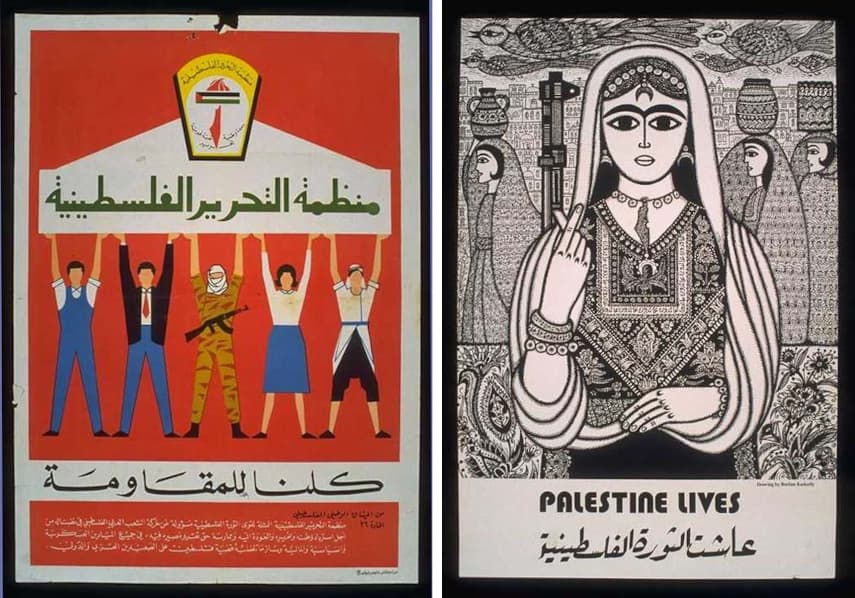
Dislocated Identity
Flourishing as a multicultural area in the first half of the 20th century, the Palestinian region under British rule manifested a vital artistic shift from religiously-dominated expressions of the late Ottoman era. Palestinian artists actively and eagerly contributed to the idea of modernity, developing painting practices, teaching/working studios, and cultural centers that reflected their authentic interpretations of Western influences. This intersection of cultures was dissected during the Arab-Israeli 1948 war when the British withdrew, terminating the mandate and allowing the State of Israel to form on grounds depleted of their former Palestinian residents.
Forced to flee their home and dispersed in cities like Baghdad, Beirut, Damascus, Cairo, and Amman, as well as in the West Bank, Gaza, and Israel, once well-established artists of Jaffa, Haifa, and Jerusalem had to work tirelessly to rebuild their lives and careers, articulating their dislocated identity within and through their work. Although they appeared long before as an artistic expression, Palestinian prints overtook the role of paving the way for the future of Palestinian art and culture while it was threatened to be extinguished.
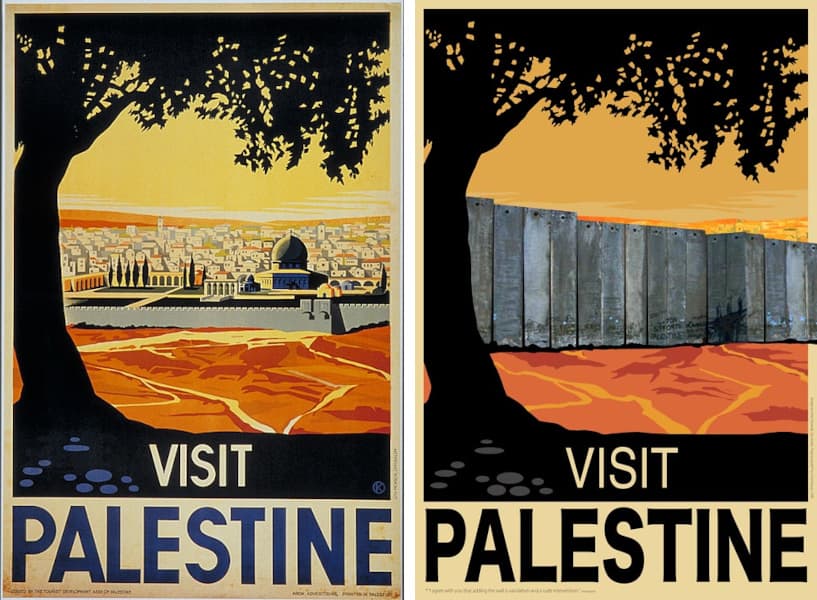
(Re)Visiting Palestine
The Nakba of 1948, meaning the catastrophe in Arabic, meant the overtake of land and territory, coupled with absolute erasure of culture, heritage, and traditions, fabricating narratives of an area desolated and unpopulated. Although ephemeral in nature, the power of the poster as a visual empowering, emancipating tool emerged as an efficient instrument in sustaining, creating, and controlling the narratives. Propelled by the liberal movements of the 1960s, Palestinian posters became a means to retake and reclaim the stories, with artists discovering the emancipatory, empowering, and comforting properties of graphic prints.
The infamous example of the poster design of the Austrian Jewish Franz Krausz, who emigrated from Germany to Palestine in the 1930s before the Holocaust, records the inclinations of the Zionist associations in Palestine and Israel to motivate people to "repopulate" the land. The idyllic commercial poster of Krausz's Visit Palestine from 1936, featuring a sun-drenched Al Aqsa in Jerusalem, permeated visual culture again in 1995 after David Tartakover reprinted the poster. Since then, the graphic print has been among the most reproduced, reprinted, and replicated designs, often remixed and alternated to provoke. The empowering capacities of the image are most evidently observed in Palestinian artist and designer Amer Shomali's reiteration of Visit Palestine (2009), remastering the work with slabs of wall obscuring the view of the city’s landmarks.

Palestinian Posters
Although the seeds of revolution were planted as early as the 1950s, with aspirations of establishing a free and independent Palestinian state, the Palestine Liberation Organisation (PLO) was not set up until 1964. A year later, the PLO established the Department of Arts and National Culture with artist and art historian Ismail Shammout at its helm, with Beirut as their stronghold. The incentive in exile, thus, gained momentum, formulating a concentrated endeavor to utilize the power of the visual image within their cause.
In Of Dreamers, Ezzeddine Qalaq and Palestine's Revolutionary Posters, Rasha Salti explains that the Palestinian revolution was perceived as "a profoundly transformative project," attracting "a nebula of dissident, gifted and innovative artists and intellectuals to Beirut."
Artists and poets contributed to the production of posters. ... In their turn, artists discovered the institutional realm as well as the resources to innovate and experiment. ... The array of experimentation, diversity and creativity of Palestinian posters is bewildering. It has remained unprecedented in the Arab world, and remarkable on a worldwide scale.
Leading artists such as Mona Saudi (b. 1945), Ghassan Kanafani (1936-1972), Sliman Mansour (b. 1947), Samir Salameh (1944-2018) Muaid al-Rawi, Rafic Charaf (1932-2003), and Mustafa al-Hallaj (1938-2002) joined the revolt, designing powerful graphics that conveyed the struggle for freedom and voiced their desires to return home. Formidable riffles were coupled with the kufiya, the traditional Palestinian headscarf, and impactful symbolism such as the dove, the olive branch, the horse, barbed wire, and folk elements integrated within the posters. From expressive to classical Arabic, the style of each print differed, focusing on finding ways to communicate with the people in, most often, richly-colored, simple, but powerful ways, superimposing the visuals with Arabic lettering, poetry, or political slogans.

Preserve or Perservere
As an instrument of mass communication, posters are marked by transience. Most often displayed on a wall of a public building, they are designed for a specific purpose to reflect an event and time but they often continue to resonate beyond its original purpose. Thus, the incentive to preserve these invaluable documents of the Palestinian struggle has become precious and an expression of solidarity. Institutional endeavors to defy the test of time include numerous Palestinian posters in the collections of the American University of Beirut’s Jafet Library, the International Institute of Social History, the Ethnographic and Art Museum at Birzeit University, the Center for the Study of Political Graphics, Los Angeles, and the Museum of Design, Zurich.
Publicly showcased, private collections such as those of Ezzeddine Qalaq, George Michel Al Ama, and Saleh Abdel Jawad's intifada poster collection also represent a bastion of hope in preserving the narrative of the Palestinian people. Still, Dan Walsh, the founder of the Palestine Poster Project Archives (PPPA), initiated one of the most ambitious, open-source projects, providing an invaluable digital, historical, evolutive database of paper ephemera. The PPPA’s digital collection numbers ten thousand, with more than four thousand paper posters in the physical archives. Among his efforts in preservation is the nomination of Palestinian Posters for the UNESCO Memory of the World register, which was vetoed by the organization's Director, Irina Bokova, marking the first time such a course of events occurred. Today, under the imminent threat of being eradicated, the narrative of the Palestinian people becomes an imperative to preserve and persevere.
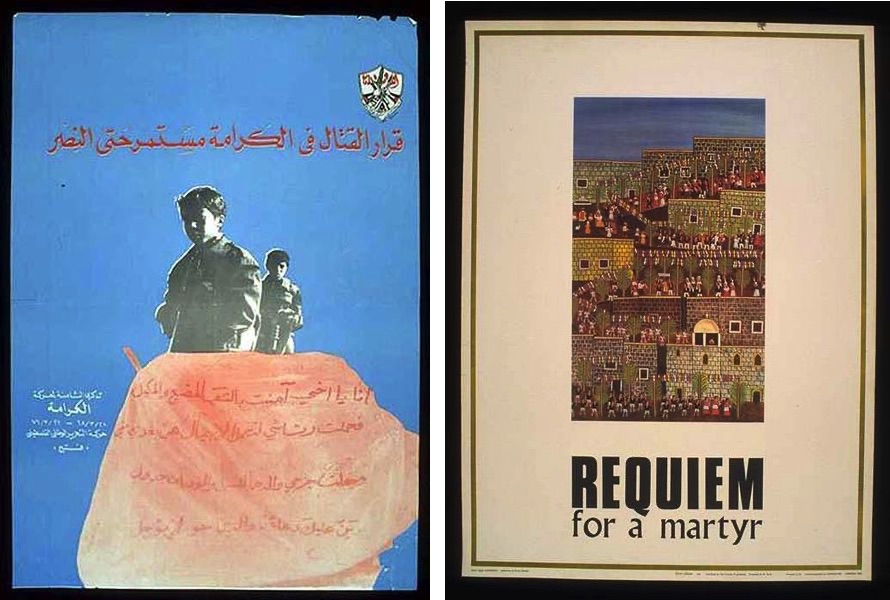
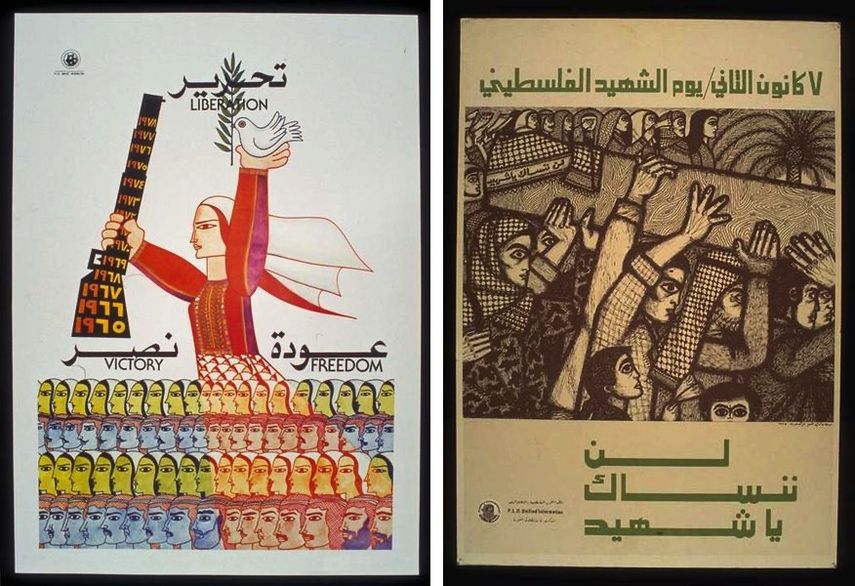
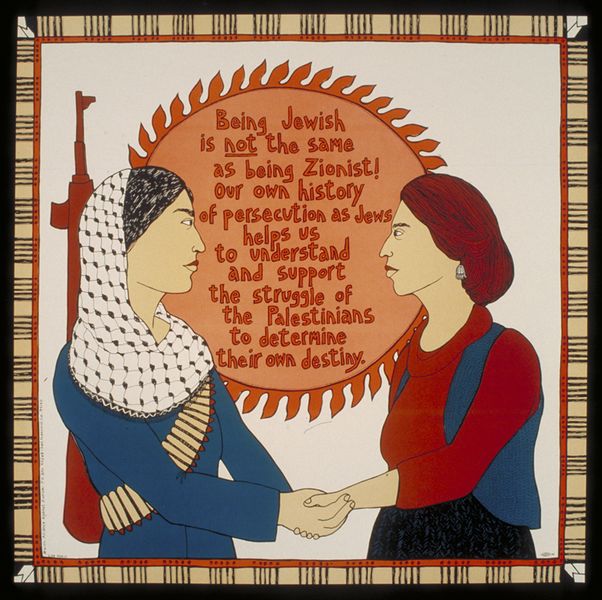


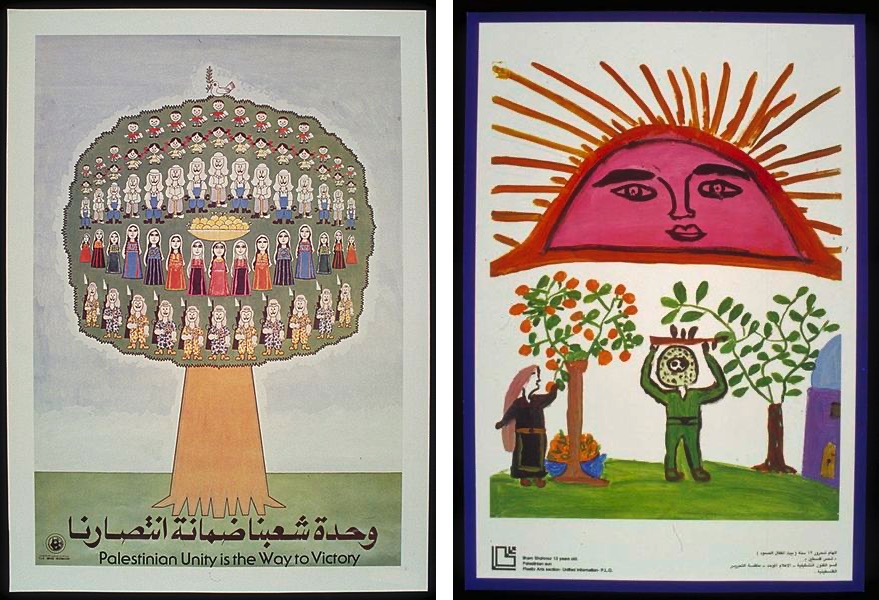
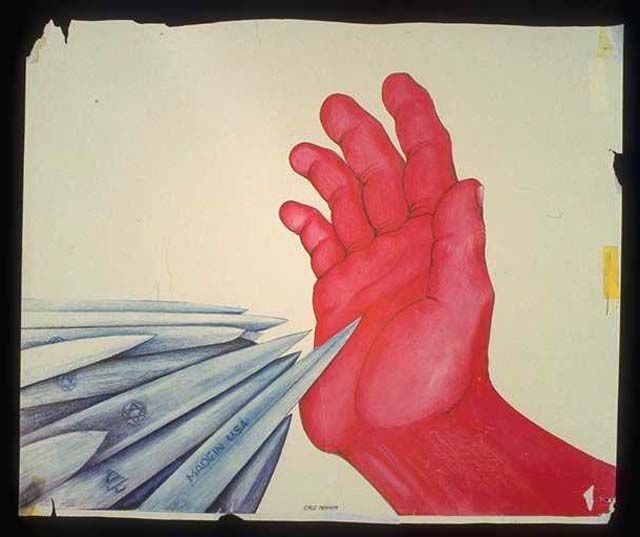
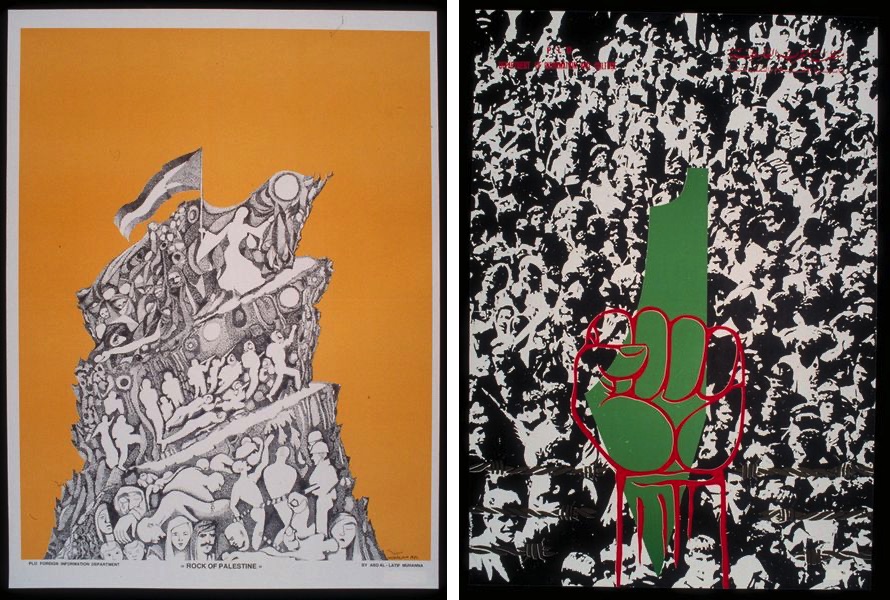

Featured images: Featured images: Mona Saudi – Peace in Palestine, 1976, via PPPA; Mustafa Al Hallaj – Battle of Al Karameh, 1969, via PPPA; Ismail Shammout – Unknown Title, c. 1970 via PPPA; Rafic Charaf – Weapons and Thought, c. 1973 via PPPA. All images are courtesy of the Palestine Poster Project Archive (PPPA).
Can We Help?
Have a question or a technical issue? Want to learn more about our services to art dealers? Let us know and you'll hear from us within the next 24 hours.
